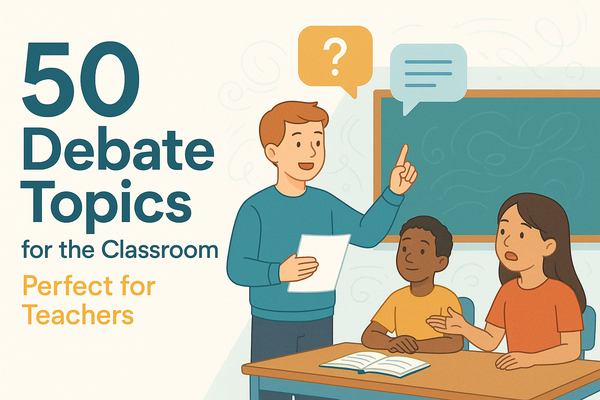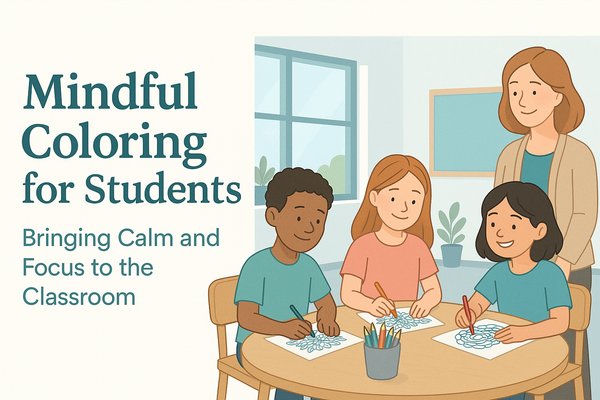Best Strategies To Create Comprehension Questions
Craft diverse comprehension questions, choose texts wisely, and tailor to specific skills for effective reading skill enhancement. Utilize Teacherbot for easy activity and plan creation.

What Are Comprehension Questions?
Understanding or having a mental grasp of something's meaning is what comprehension refers to. A comprehension question usually has an answer that you can find in the passage or paragraph.
Comprehension Question Types
According to this paragraph, . .
According to this passage, . . .
According to this article, . . .
According to this book, . . .
You are to find . . . (answers will include phrases or sentences)
This means . . .
It is clear from this passage that . . .
Finding the word, phrase, or sentence that directly addresses the comprehension challenge is the best course of action. Be careful that some inquiries are simply another way of expressing what the section or paragraph has already said.
How To Create Comprehension Questions?
Choose Your Text Wisely
You must carefully choose the content before you consider the questions. The material you select must complement your goal of practising a particular reading ability if you are aware of it. For instance, selecting an instructional text to teach and practise inference skills would be of very little use. Although it's an extreme case, it illustrates the point: be sure the language you pick supports the abilities you wish to impart.
Plan Out Ahead
If they have not pre-read their text and considered the questions they will ask, even the most seasoned teachers face the risk of asking superficial and poorly-worded queries. Also, there is a propensity to ask retrieval questions rather than any other queries that go deeper into a text. Questions you want to ask should be written down.
Provide Specific Information
Don't make students spend an eternity trying to identify the passage in the text where they might find the solution. Offer them advice like:
Look at this sentence:
Look at the paragraph beginning
It says... at the top of the page. Even the tests offer this kind of data. Without this knowledge, students cannot exhibit their understanding abilities any better, however by providing no such hints, Students may practise their scanning abilities.
Take Help From Various Response Formats
Many of the comprehension exercises that teachers assign to take the straightforward form of a written question. A brief glance through an exam will yield a wealth of additional suggestions on how to format questions:
- Multiple Choice
- Ordering Events by Numbering
- True or False
- Matching
Focus On A Particular Skill
When reading the book selected for the reading lesson, there is a desire to merely ask the first questions that come to mind. There is limited chance for purposeful teaching and practise of specific skills like inferring, summarising, or predicting if students are only ever given a scattering of questions throughout the content domains. The majority of classes should concentrate on one skill, and perhaps an entire series of lessons will be devoted to the instruction and practise of one talent.
Reviewing Your Questions
Once you've written your questions down, it's a good idea to either have another teacher review them or come back to them later and read them again. Do they make sense? Is it obvious what the correct answers are? Do they need to be reworded? You don't want students to be discouraged from answering the questions due to a lack of clarity, so ask yourself these kinds of questions and make the necessary edits.
Questions For Reading Comprehension in the Classroom
Knowing the importance of reading comprehension for your students as a teacher. But how can we best assist them in strengthening their understanding abilities? These reading comprehension questions can be useful. These can be used as a method to gauge students' comprehension of texts or to urge students to think more deeply about what they're reading.
Questioning Techniques for Reading Comprehension
Students can demonstrate their comprehension of what they have read by asking questions. Many disciplines, including story structure and predictions, can benefit from the adoption of this tactic. Each chapter offers advice on how to apply this ability when reading aloud to your child or student!
A list of questions you can use with students is suggested for each segment. The various areas include
- Story Structure
- Making Predictions
- Author's Purpose
- Summarising
- Making Connections
- Self-Monitoring and Self-Correction
- Inferring
1. Questions about Story Structure
Focus on the progression of events while discussing story structure with students. These comprehension questions will aid students in understanding how the sequence of events affects how they interact with one another and, eventually, how the characters fare.
- What does this book's title mean?
- Who is the author, illustrator, or both?
- How can you tell whether this book is nonfiction or fiction?
- Can you repeat the tale in chronological order?
- Where is the story taking place? How did you find out?
- What kind of narrative is this? How did you find that out?
2. Questions About Making Forecasts
Before, during, or after reading, you can ask questions. Limit queries and refrain from making students feel awkward about making educated guesses or word predictions while reading. The better, the fewer distractions! Use these reading comprehension questions to guide students who may be having trouble with this concept.
- What will occur after that? How did you find out?
- Do you anticipate any issues or conflicts for the characters? How did you find out?
- What do you anticipate happening at the story's conclusion? Why do you believe this?
- What do you believe will occur if...?
- What emotions or thoughts do you think the characters are experiencing?
3. Questions Regarding the Author
When reading or listening to a narrative, students should take the author's intentions into account. People must view stories objectively, rather than only from their own point of view.
- What motivated the author to create this tale, in your opinion? (For instance, was it intended to enlighten, amuse, persuade, etc.?)
- What point did the author want to make? How did you find out?
- Why do you think the story's setting was selected by the author?
- What does the author want to convey to us?
4. Comprehension Questions in Summary
Summarising entails picking out key passages from a text and disregarding everything else. A summary could be a written or verbal breakdown of the key ideas. Use these questions as prompts for students who need extra help recalling what they read and to urge them to recall important passages from the text.
- What is the story's central concept?
- What took place in the narrative? Could you just summarise what happened?
- What do you consider to be the story's most crucial element? Why?
- Has anything transpired that has altered the story's conclusion? Do you anticipate this?
- What was the purpose of the character? How did they accomplish that?
5. Questions About Building Connections
Students should practise telling tales in captivating and engaging ways. These connections will become more precise with practice. During reading, it's important to take a break and give students some time to process before establishing connections. These comprehension queries are yet another excellent method for encouraging students.
- Are there any characters in the story that come to mind?
- Are there any books you've read that this one makes you think of?
- What emotions did the narrative evoke in you, and why?
- Does this story teach you anything that you can apply to your daily life?
- What about this story reminds you of anything going on today?
6. Questions for Self-Monitoring and Self-Correction
When a reader detects their own reading faults, they are self-monitoring. Self-correction is the capacity to review and correct those mistakes. We encourage students to stop reading when they see a mistake they've made so they can fully comprehend what they're reading. Utilise these inquiries to sharpen these abilities.
- Does that make sense?
- Do you understand it?
- Do the pictures make the tale easier to understand?
- What details of the story did you find confusing? For clarity, go back and read it again.
- What methods could you employ to assist if you don't comprehend something?
- Why did you put down the book?
7. Comprehension Questions for Inferences
Students need time to develop the complex ability to make inferences. It entails interpreting the text subtly and using prior information to hazard plausible narrative inferences. As they read, they will draw conclusions from a variety of indications, resulting in a range of possible solutions. Use these reading comprehension questions to encourage students to read critically and to increase their comprehension of the content.
- What was the story's lesson?
- What was the story's primary emotion, such as happiness or sadness? How did you find that out?
- What made the character decide to do that? Why?
- Did you concur with the character's decision?
- Describe some of the feelings the characters have.
Conclusion
In conclusion, we can state that even though creating reading comprehension questions may appear rather simple, they do need to be genuine and accurately reflect the subject matter they are intended to evaluate. For instance, multiple-choice questions offer mediocre feedback on how well students understand the literature they are referencing. Using literal comprehension questions that require students to write their answers, displaying an understanding of the text's plain meaning, could provide for more authentic work.
By the time you reach this section of your reading, you must have a firm understanding of what comprehension questions are and how to construct them. Lastly, be sure to check out the tool we have designed called Teacherbot which allows you to create activities and plans for any level (from nursery to university) and subject.




